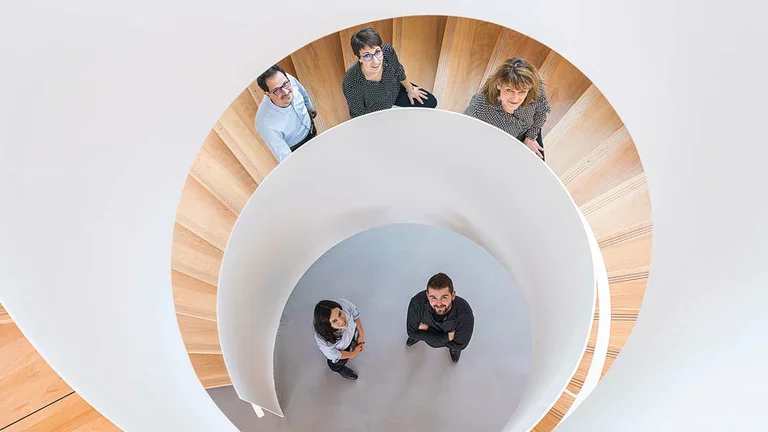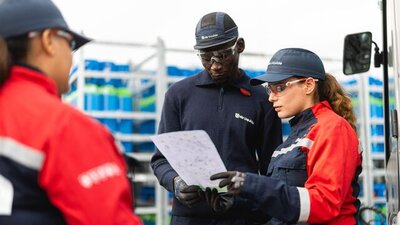Climate change, chronic diseases, cybersecurity – sometimes, the magnitude of the challenges facing society can feel dizzying. Yet the technology for responding to these trends is not beyond our reach – quite to the contrary. Air Liquide is one of the companies developing deep tech solutions¹ to tackle them, through a cooperative approach to innovation that will be the key to its success.
As industries around the world have grown ever more interconnected due to globalization, innovation silos will simply no longer cut it. The technological advancements of the future are defined by one theme: collaboration. “Experience teaches us that innovation is always first and foremost a matter of people, connections and analogies,” says Chairman and CEO Benoît Potier. “Gone are the days when a firm could retain control over its entire R&D efforts… From now on, innovation will take place in an open ecosystem.”
With a network of Campuses in Europe, North America and Asia, Air Liquide has created a flourishing ecosystem of collective intelligence focused on developing and manufacturing disruptive business solutions. “We will see exciting new technologies from our ecosystem in real-world use in the near future,” says Luc Gaffet, Fusion and Big Market Science Director, Global Markets & Technologies.
Guillaume Desaché, Cryoconcept’s Managing Director, agrees, citing steering traffic on the ground, the automated development of new medicines and cybersecurity as near-future applications. "To go beyond research use and into industrial or safety-critical applications, our products need higher reliability and better availability, as well as an overall improvement to their current cooling power,” he says. “With over sixty years experience in both extreme cryogenics and production at scale, Air Liquide is the ideal partner."
"It’s a win-win collaboration,” replies Luc Gaffet, "because Cryoconcept helps us to enlarge our offer to include extremely low temperatures. Also, their technology uses helium 3 and helium 42, two very rare molecules, which we supply to our customers."
Helium recovery systems for imaging scanners
The Group worked in close coordination with United Imaging’s teams to design a turnkey helium solution that greatly increases the recovery rate of helium and further guarantees the stable supply of liquid helium. This helium is used by United Imaging in MRI (Magnetic resonance imaging) and PETMR (Positron emission tomography - magnetic resonance imaging) scanners to keep internal temperatures low and ensure the proper functioning of the machines. "Air Liquide provides innovative solutions based on continuously updated technology, enabling us to provide customized services to our customers," says LV Yunlei.
Developing a low-cost energy storage solution
“We are currently prototyping our seasonal battery to try and scale it up to the kilowatt stage,” says founder, CEO and CTO Andreï Klochko, "and having people we can ask for advice on building machinery to run at high temperatures and under pressure is invaluable."
Deployed at scale, Airthium’s ammonia-based energy storage solution promises to provide a low-cost way of storing excess solar and wind energy over months or even years. It will make renewable energy production and storage a sustainable replacement of coal and gas power plants.
Air Liquide’s intention to be behind many of the pioneering technologies of the future requires the Group to collaborate with the right partners. By leveraging collective intelligence across industries and partners, the company has already succeeded in creating a global ecosystem of truly open innovation. The key to future success? Expanding this network to support the development of as many deep tech technologies as possible, leading to the opening of new markets and the dawning of new technological frontiers.
Air Liquide is a key player in deep tech, offering innovative, high-tech solutions through its Global Markets and Technologies (GM&T) Business Unit, in the sectors of aerospace, space and extreme cryogenics for scientific research. The Group has recently inaugurated its Campus Technologies Grenoble (France), dedicated to the design and production of technologies for the deep tech and energy transition (hydrogen and biomethane) markets, and supports many deep tech start-ups through its Accelair accelerator, housed at the Paris Innovation Campus.
2. Pure helium 3 is the liquid with the lowest boiling point. Helium 4 is the one commonly referred to as helium.



